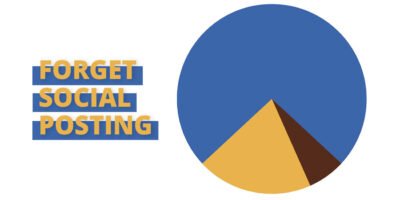There are only two kinds of traffic you can send to your website.
Organic and Paid traffic.
How to know which one to choose?
Do you have to choose at all?
Or could I work on both?
Fact number 1: You need solid foundations.
You do not want to renovate a house outside with faulty foundations. If it collapses due to faulty foundations, the whole effort is futile.
First, I always build solid foundations online for my clients.
In your position, I would focus on setting things up to generate organic traffic first. I would not invest a dime in PPC before that (pay per click – that is, paid ads).
How can I drive traffic to my website?
Focus on organic traffic first!
- Have a clear CTA on your website.
- Have a clear structure for an easy user experience and have all the visuals match what you are planning to communicate.
- Have your search engine optimisation done.
Let me explain each of these points in a bit more detail.
Have a clear CTA on your website.
(CTA means the call to action).
- What do you want to achieve on your website?
- Do you want people to phone you up?
- Do you want visitors to make a reservation?
- Do you want them to send a message?
- What is the number 1 thing you want to achieve for CTA?
It is ideal to emphasise one clear direction in your communication. In your site content, discuss one concrete CTA you want visitors to do.
Tip! If you want people to book a table via message, do not overcommunicate your phone number. So make sure you have the booking option everywhere placed on the site. The rest, e.g., the phone number and the email address, can be put out of sight into the footer or a contact sub-page.
Have a clear structure for an easy user experience.
- Who do you want for customers?
- Do you have a specific target group within certain demographics or psychographics*?
- How would you describe your ideal customers?
- What areas do you serve? What locations? Do you mention this on your website? Do you mention famous streets, popular places, and other businesses in your area?
- How is your site built? Does it cater to these specific groups of people?
- Does your website have a logical flow? Is it easy to navigate?
On your website, write about your target group. What will they achieve, what will they get, and what will they benefit from by choosing your product or service?
Write about your target group and not about you.
*What is the difference between psychographics vs. demographics?
Customer demographics describe who your buyer is.
Gender, age, income level, marital status, and life events.
Customer psychographics describes why they buy.
It can include beliefs, values, habits, goals, and attitudes. Psychographic information includes subjective data.
Have your search engine optimisation done.
- Do you have a keyword list?
- Do you know what search terms you want to show up for in Google Searches?
- Do you have a clear marketing direction with these search phrases?
- Do you know the basics of SEO and how it can help your business?
To get the basics right, I have explained SEO in the simplest way possible in this article. To make it easy for you to understand.
It would help if you also got a basic on-site search engine optimisation. For that, you need keyword research. I have described where to place those keywords in bullet points in this article.
I hope I have generated some ideas for you to ponder. That was my aim with this short post.
Thank you for reading my post.
I am Shopi.
I help businesses build solid online foundations.




